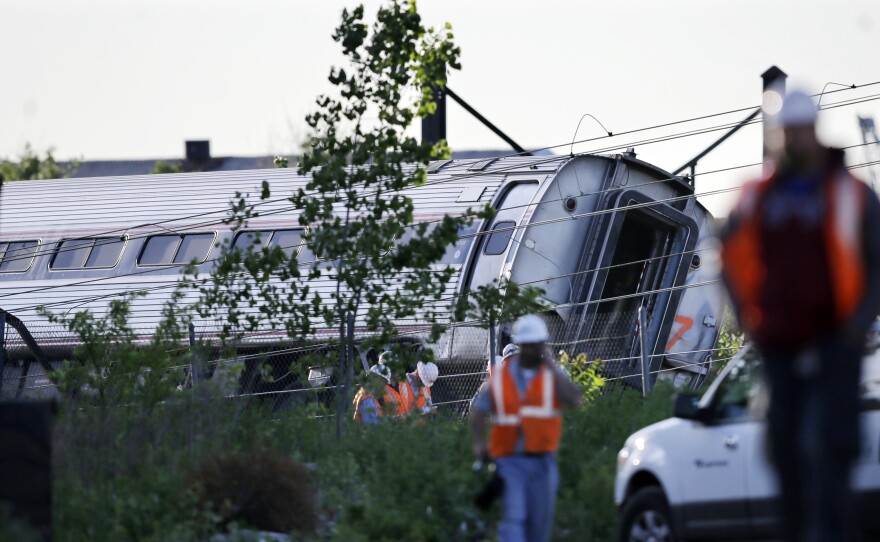One key safety feature was missing from the stretch of tracks where an Amtrak passenger train going more than 100 mph derailed and killed seven people.
Investigators say that if positive train control had been installed on that stretch, the technology could have automatically slowed the train down and perhaps saved lives.
NPR's David Schaper tells our Newscast unit that Amtrak and other railroads are behind schedule in rolling out the technology.
He filed this report:
"Positive train control overrides operator error and slows down or stops a train if the engineer misses a signal or is going too fast."'Positive train control is the next big step that is going to generate very meaningful improvements in railroad safety,' Joe Szabo, former head of the Federal Railroad Administration says. "But Szabo says technological problems will keep many railroads from meeting the federal deadline for implementation of the end of this year. "Former National Transportation Safety Board Chairwoman Deborah Hersman says that failure puts lives at risk. "'Because we know we will continue to see derailments and collisions year after year," she says. Tragedies that she says could be prevented."
Positive train control uses GPS track sensors and other sensors to both determine the speed the train is traveling at and if there are any obstacles up ahead. It knows the speed limit on every stretch of rail, so if a train is going too fast for whatever reason, it slows it down.
The New York Times reports that in the January/February issue of Amtrak Ink, which the company publishes for employees, Amtrak said it had rolled out positive train control to about 400 miles of track.
The Times adds:
"That included the New England Line, from Boston to New Haven; the New York Line, from New Brunswick, N.J., to Trenton; and the Mid-Atlantic Line, from Perryville, Md., to Wilmington, Del. The next step is another 1,200 miles of track, including the rest of the Northeast Corridor.
"Investigators said Wednesday that they would seek to determine why the stretch of track where the accident occurred was not in service yet. But for safety advocates, accidents on passenger trains involving excessive speeds in recent years clearly demonstrate the need."






